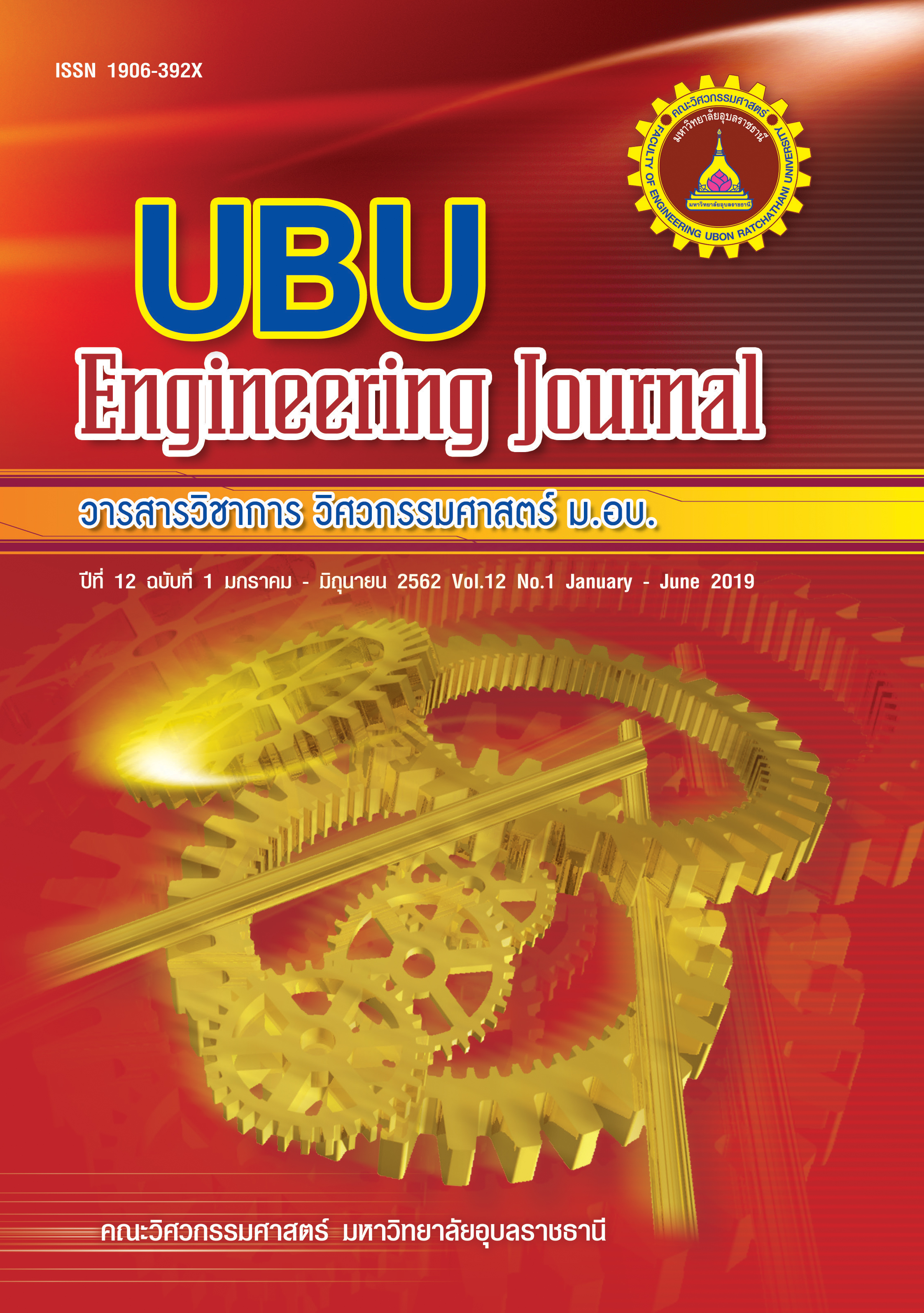Study of PET Image Classification Methods to the Preliminary Diagnosis of Alzheimer's Disease
Main Article Content
Abstract
Thailand has been undergoing a transition into a completely developed elderly society. The sign is becoming more apparent in the last few years, when a ratio between the number of children and mature adults has been dramatically decreasing. In additional to prevailing measures the government has to take, healthcare service for elderly people has to be readily prepared. Among diseases from which the elderly people are suffered are high blood pressure, high cholesterol and dementia. Age related dementia are gradually developed. Alzheimer's disease is however another more serious type of dementia that often drastically affect not only the patient but also their caretaker. Early diagnosis of the symptom could well enable therapeutic measures that improve their quality of life. This can be done in several ways, e.g., by medical survey and medical imaging. This paper therefore presents a robust PET image classification methods for diagnosing Alzheimer's disease in a samples drawn from Thai population. The proposed process adopted K-means clustering and Gabor Wavelet for brain segmentation and image feature extraction, respectively. To reduce the dimensions of data involved, only mean and standard deviation of pixels were extracted as features. The disease was finally classified by using a supervised machine learning in turn. Specifically, four classification methods were considered, i.e., Eigenface, Support Vector Machine, Convolutional Neural Network and proposed method. The experimental results indicated the accuracy of proposed method was up to 87%. It was appropriate to identify Alzheimer's patients from normal controls and the proposed SVM outperformed the rest.
Article Details
References
[2] ภาวะสมองเสื่อมพบในผู้สูงอายุมากสุด. สำนักงานกองทุนสนับสนุนการสร้างเสริมสุขภาพ. 3 เมษายน 2558.
[3] Mahmood R, Ghimire B. 2013. Automatic detection and classification of Alzheimer' s Disease from MRI scans using principal component analysis and artificial neural networks. Proceedings of the 20th International Conference on Systems Signals and Image Processing, July 7-9 2013: 133-137.
[4] Dolph, C. V. and et al. 2017. Deep learning of texture and structural features for multiclass Alzheimer's disease classification. Proceedings of International Joint Conference on Neural Networks, May 14-19 2017: 2259 – 2266.
[5] Sarraf, S. and Tofighi, G. Deep learning-based pipeline to recognize Alzheimer's disease using fMRI data, Proceedings of Future Technologies Conference, San Francisco, CA, USA, Dec. 6-7, 2016: 816-820.
[6] Billones, C.D. and et al. 2016. DemNet: A Convolutional Neural Network for the detection of Alzheimer's Disease and Mild Cognitive Impairment. Proceedings of IEEE Region 10 Conference, Nov 22-25, 2016: 3724-3727.
[7] Han, Y. and Zhao, X.M. 2016. A hybrid sequential feature selection approach for the diagnosis of Alzheimer's Disease, Proceedings of International Joint Conference on Neural Networks. July 24-29 2016: 1216-1220.
[8] โยธิน ชินวลัญช์. บทความคลีนิคความจำ. โรงพยาบาลกรุงเทพ.
[9] Tepmongkol, S. 2013. PET Imaging in Alzheimer’s Disease. The Bangkok Medical Journal, 5: 76-79.
[10] Garali I, Adel M, Bourennane S. Guedj E. Region-based brain selection and classification on PET images for Alzheimer's disease computer aided diagnosis. In: Proceedings of IEEE International Conference on Image Processing (ICIP). 2015. p. 1473–1477.
[11] Jiang J, Shu X, Liu X, Huang Z. A Computed Aided Diagnosis tool for Alzheimer's disease based on 11C-PiB PET imaging technique. In: Proceedings of the IEEE International Conference on Information and Automation. 2015. p. 1963–1968.
[12] Wu W, Venugopalan J, Wang M. 11C-PIB PET Image Analysis for Alzheimer’s Diagnosis Using Weighted Voting Ensembles. Proceedings of the IEEE Engineering in Medicine and Biology Society (EMBC). 2017: 3914–3917.
[13] Krashenyi I, Popov A, Ramirez J, Gorriz JM. Fuzzy Computer-aided Diagnosis of Alzheimer’s Disease using MRI and PET Statistical Features. In: Proceedings of the IEEE International Conference on Electronics and Nanotechnology. 2016. p. 187–191.
[14] Das A, Bhattacharya M. Effective Image Fusion Method to Study Alzheimer's Disease using MR, PET Images. 2015. In: Proceedings of the IEEE International Conference on Bioinformatics and Biomedicine. 2015. p. 1603–1607.
[15] Lu Y, et al. Identification of rice diseases using deep convolutional neural networks. Neurocomputing. 2017; 267: 378–384.
[16] Sladojevic S, at al. Deep Neural Networks Based Recognition of Plant Diseases by Leaf Image Classification. Computational Intelligence and Neuroscience. 2016.
[17] Chen J, et al. Thorax disease diagnosis using deep convolutional neural network. In: Proceedings of the IEEE 38th Annual International Conference of the Engineering in Medicine and Biology Society. 2016. p. 2287–2290.
[18] Yao C, et al. A Convolutional Neural Network Model for Online Medical Guidance. IEEE Access. 2016; 4: 4094–4103.
[19] ชูชาติ ปิณฑวิรุจน์. การประมวลผลภาพดิจิตอลขั้นสูงด้วย MATLAB. กรุงเทพฯ: สำนักพิมพ์ มีน เซอร์วิส ซัพพลาย; 2556. หน้า 33.
[20] Gunn SR. Support Vector Machines for Classification and Regression. University of Southampton. 1998.
[21] Wasserman WW, Fickett JW. Identification of Regulatory Regions which Confer Muscle-Specific Gene Expression. J. Mol. Biol. 1998; 278: 167–181.
[22] Anderson D, McNeil G. Artificial Neural Networks Technology. A DACS State-of-the-Art Report. 1992.
[23] Deng L, Yu D. Deep Learning: Methods and Applications. Foundations and Trends in Signal Processing. 2014; 7 (3–4): 1–199.

